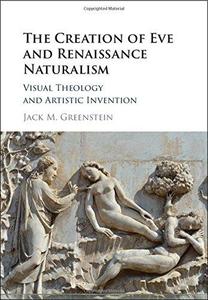
The Creation of Eve and Renaissance Naturalism: Visual Theology and Artistic Invention By Jack M. Greenstein
2016 | 266 Pages | ISBN: 110710324X | PDF | 21 MB
Depicting the Creation of Woman presented a special problem for Renaissance artists. The medieval iconography of Eve rising half-formed from Adam's side was hardly compatible with their commitment to the naturalistic representation of the human figure. At the same time, the story of God constructing the first woman from a rib did not offer the kind of dignified, affective pictorial narrative that artists, patrons, and the public prized. Jack M. Greenstein takes this artistic problem as the point of departure for an iconographic study of this central theme of Christian culture. His book shows how the meaning changed along with the form when Lorenzo Ghiberti, Andrea Pisano, and other Italian sculptors of the fourteenth and fifteenth centuries revised the traditional composition to accommodate a naturalistically depicted Eve. At stake, Greenstein argues, is the role of the artist and the power of image-making in reshaping Renaissance culture and religious thought.
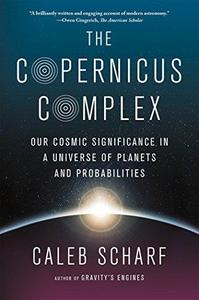
The Copernicus Complex: Our Cosmic Significance in a Universe of Planets and Probabilities By Caleb Scharf
2015 | 288 Pages | ISBN: 0374535574 | EPUB | 2 MB
Longlisted for the 2015 PEN/E.O. Wilson Literary Science Writing AwardShort-listed for Physics World's Book of the YearThe Sunday Times (UK) Best Science Book of 2014A Publishers Weekly Top 10 Science Book of Fall 2014An NBC News Top Science and Tech Book of 2014A Politics & Prose 2014 Staff PickIn the sixteenth century, Nicolaus Copernicus dared to go against the establishment by proposing that Earth rotates around the Sun. Having demoted Earth from its unique position in the cosmos to one of mediocrity, Copernicus set in motion a revolution in scientific thought. This perspective has influenced our thinking for centuries. However, recent evidence challenges the Copernican Principle, hinting that we do in fact live in a special place, at a special time, as the product of a chain of unlikely events. But can we be significant if the Sun is still just one of a billion trillion stars in the observable universe? And what if our universe is just one of a multitude of others-a single slice of an infinity of parallel realities?In The Copernicus Complex, the renowned astrophysicist Caleb Scharf takes us on a scientific adventure, from tiny microbes within the Earth to distant exoplanets, probability theory, and beyond, arguing that there is a solution to this contradiction, a third way of viewing our place in the cosmos, if we weigh the evidence properly. As Scharf explains, we do occupy an unusual time in a 14-billion-year-old universe, in a somewhat unusual type of solar system surrounded by an ocean of unimaginable planetary diversity: hot Jupiters with orbits of less than a day, planet-size rocks spinning around dead stars, and a wealth of alien super-Earths. Yet life here is built from the most common chemistry in the universe, and we are a snapshot taken from billions of years of biological evolution. Bringing us to the cutting edge of scientific discovery, Scharf shows how the answers to fundamental questions of existence will come from embracing the peculiarity of our circumstance without denying the Copernican vision.With characteristic verve, Scharf uses the latest scientific findings to reconsider where we stand in the balance between cosmic significance and mediocrity, order and chaos. Presenting a compelling and bold view of our true status, The Copernicus Complex proposes a way forward in the ultimate quest: determining life's abundance, not just across this universe but across all realities.

The Complete Cook's Country TV Show Cookbook Includes Season 14 Recipes: Every Recipe and Every Review from All Fourteen Seasons by America's Test Kitchen
English | August 24th, 2021 | ISBN: 1948703726 | 920 pages | True EPUB | 391.90 MB
Hit the road with top-rated Cook's Country TV and devour another year of great American recipes.

The Clutter Remedy: A Plan for Getting Organized for Those Who Love Their Stuff by Marla Stone
English | 3 Dec. 2019 | ISBN : 1608686299 | 256 pages | True AZW3 | 0.6 MB
[center]
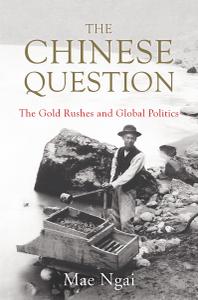
The Chinese Question: The Gold Rushes and Global Politics by Mae Ngai
English | August 24th, 2021 | ISBN: 0393634167 | 464 pages | True EPUB | 21.55 MB
How Chinese migration to the world's goldfields upended global power and economics and forged modern conceptions of race.

Hugo Munsterberg, "The Ceramic Art of Japan: A Handbook for Collectors"
English | 2010 | ASIN: B00EBO1HT4 | 272 pages | EPUB | 16.5 MB
Featuring dozens of color photographs and extensive commentary, this Japanese ceramics guide is an comprehensive resource for collectors and art enthusiasts.
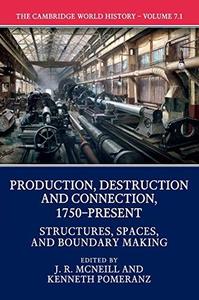
The Cambridge World History: Volume 7, Production, Destruction and Connection, 1750-Present, Part 1, Structures, Spaces, and Boundary Making By J. R. McNeill, Kenneth Pomeranz
2018 | 600 Pages | ISBN: 1108407757 | PDF | 39 MB
Since 1750, the world has become ever more connected, with processes of production and destruction no longer limited by land- or water-based modes of transport and communication. Volume 7 of the Cambridge World History series, divided into two books, offers a variety of angles of vision on the increasingly interconnected history of humankind. The first book examines structures, spaces, and processes within which and through which the modern world was created, including the environment, energy, technology, population, disease, law, industrialization, imperialism, decolonization, nationalism, and socialism, along with key world regions.

The Cambridge World History: Volume 7, Production, Destruction and Connection 1750-Present, Part 2, Shared Transformations? By J. R. McNeill, Kenneth Pomeranz
2018 | 500 Pages | ISBN: 1108407765 | PDF | 27 MB
Since 1750, the world has become ever more connected, with processes of production and destruction no longer limited by land- or water-based modes of transport and communication. Volume 7 of the Cambridge World History series, divided into two books, offers a variety of angles of vision on the increasingly interconnected history of humankind. The second book questions the extent to which the transformations of the modern world have been shared, focusing on social developments such as urbanization, migration, and changes in family and sexuality; cultural connections through religion, science, music, and sport; ligaments of globalization including rubber, drugs, and the automobile; and moments of particular importance from the Atlantic Revolutions to 1989.
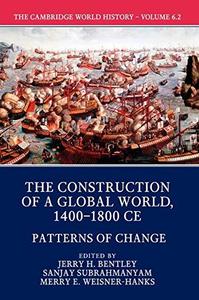
The Cambridge World History: Volume 6, The Construction of a Global World, 1400-1800 CE, Part 2, Patterns of Change By Jerry H. Bentley, Sanjay Subrahmanyam, Merry E. Wiesner-Hanks
2018 | 528 Pages | ISBN: 1108407749 | PDF | 7 MB
The era from 1400 to 1800 saw intense biological, commercial, and cultural exchanges, and the creation of global connections on an unprecedented scale. Divided into two books, Volume 6 of the Cambridge World History series considers these critical transformations. The first book examines the material and political foundations of the era, including global considerations of the environment, disease, technology, and cities, along with regional studies of empires in the eastern and western hemispheres, crossroads areas such as the Indian Ocean, Central Asia, and the Caribbean, and sites of competition and conflict, including Southeast Asia, Africa, and the Mediterranean. The second book focuses on patterns of change, examining the expansion of Christianity and Islam, migrations, warfare, and other topics on a global scale, and offering insightful detailed analyses of the Columbian exchange, slavery, silver, trade, entrepreneurs, Asian religions, legal encounters, plantation economies, early industrialism, and the writing of history.
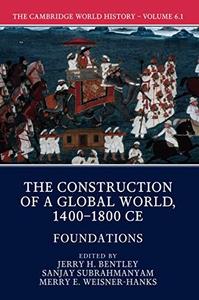
The Cambridge World History: Volume 6, The Construction of a Global World, 1400-1800 CE, Part 1, Foundations By Jerry H. Bentley, Sanjay Subrahmanyam, Merry E. Wiesner-Hanks
2018 | 512 Pages | ISBN: 1108407730 | PDF | 47 MB
The era from 1400 to 1800 saw intense biological, commercial, and cultural exchanges, and the creation of global connections on an unprecedented scale. Divided into two books, Volume 6 of the Cambridge World History series considers these critical transformations. The first book examines the material and political foundations of the era, including global considerations of the environment, disease, technology, and cities, along with regional studies of empires in the eastern and western hemispheres, crossroads areas such as the Indian Ocean, Central Asia, and the Caribbean, and sites of competition and conflict, including Southeast Asia, Africa, and the Mediterranean. The second book focuses on patterns of change, examining the expansion of Christianity and Islam, migrations, warfare, and other topics on a global scale, and offering insightful detailed analyses of the Columbian exchange, slavery, silver, trade, entrepreneurs, Asian religions, legal encounters, plantation economies, early industrialism, and the writing of history.


